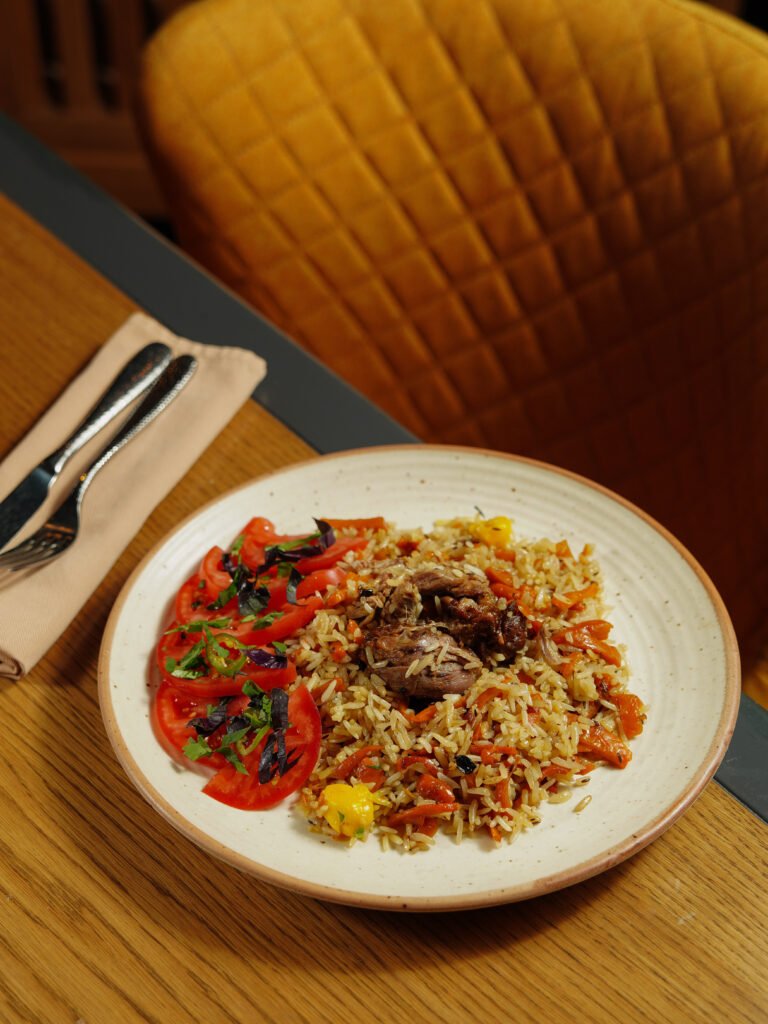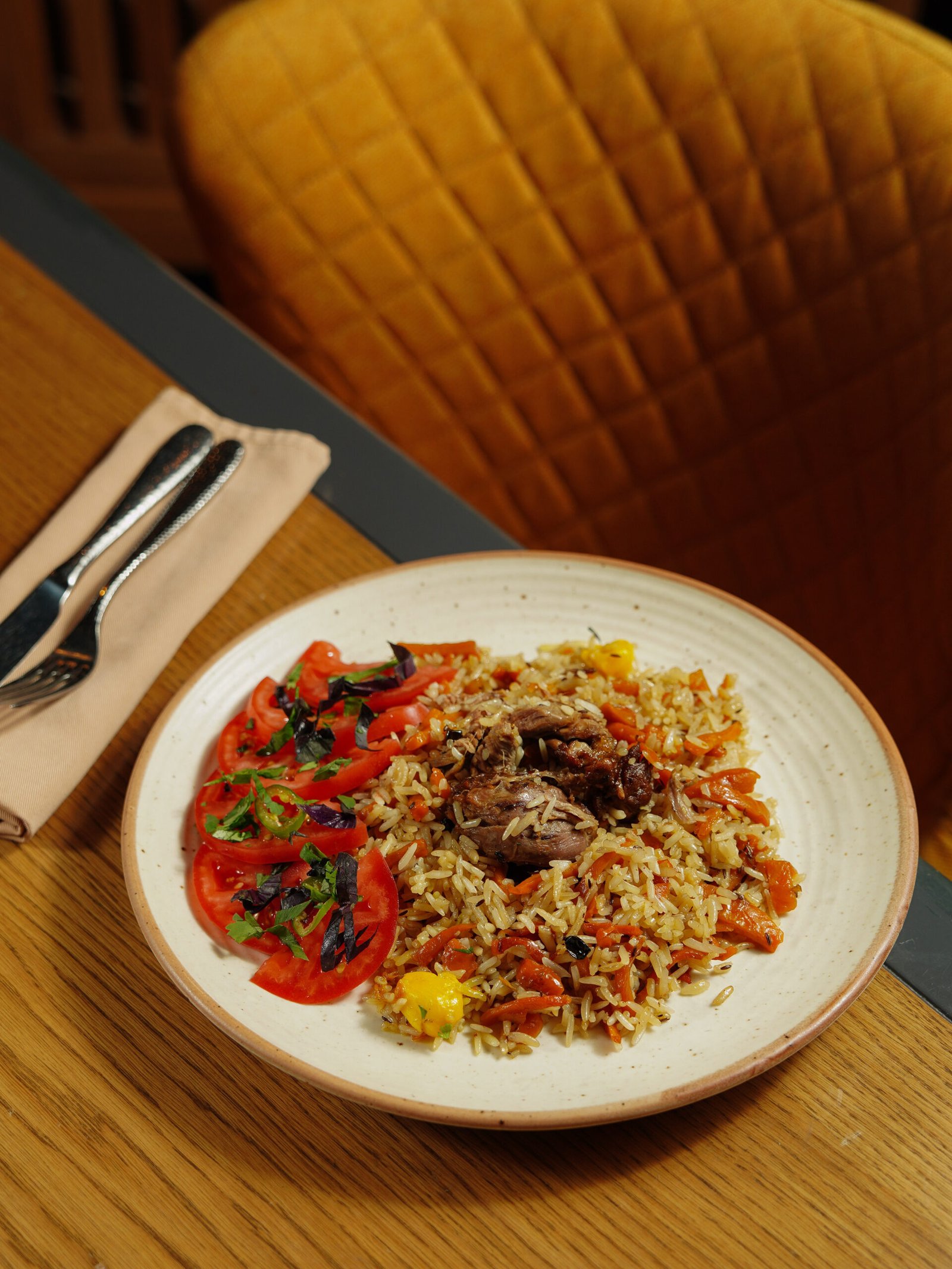Imagine coming home after a long day, craving a wholesome and flavorful meal that’s quick and easy to make. Look no further than our delightful recipe for Rice Pilaf with Mixed Vegetables. This dish brings together fluffy rice, a medley of colorful vegetables, and a tantalizing blend of aromatic spices, creating a truly satisfying meal that will leave you feeling nourished and content. With just a few simple steps, you’ll have a hearty and nutritious dinner on your table in no time. Say goodbye to weeknight dinner woes and hello to a scrumptious meal that will have you coming back for seconds.
Ingredients
To make a delicious rice pilaf with mixed vegetables, you will need the following ingredients:
Rice
Rice is the base of this dish and provides a hearty and filling component. You can use any type of rice you prefer, such as long-grain, jasmine, or basmati.
Mixed vegetables
Mixed vegetables add a burst of color and flavor to the rice pilaf. You can choose your favorite mix of vegetables, such as carrots, peas, corn, bell peppers, and broccoli. Use fresh or frozen vegetables, depending on what you have on hand.
Onion
Adding finely chopped onion to the pilaf brings a sweet and savory taste to the dish. It blends well with the other ingredients and adds depth to the overall flavor.
Garlic
Garlic is a versatile ingredient that enhances the taste of any dish. It adds a unique aroma and a slight kick to the rice pilaf. Make sure to finely mince the garlic cloves for even distribution.
Vegetable broth
Vegetable broth is used to cook the rice and infuse it with additional flavor. If you don’t have vegetable broth, you can substitute it with water or use chicken broth if you prefer a non-vegetarian option.
Olive oil
Olive oil is the preferred choice for sautéing and cooking the vegetables in this recipe. It adds a rich, fruity flavor to the dish. However, you can use any cooking oil you prefer.
Salt
Salt is an essential seasoning that brings out the flavors of the other ingredients. Use it to taste, adjusting the amount as necessary.
Black pepper
Black pepper adds a subtle spiciness to the rice pilaf. Freshly ground pepper is recommended for the best flavor, but you can also use pre-ground pepper if that’s what you have on hand.
Herbs and spices
You can personalize the flavor of your rice pilaf by adding various herbs and spices. Popular options include dried thyme, oregano, parsley, or a touch of cayenne pepper for some heat.
Preparation
Before you start cooking, it’s important to prepare the ingredients to ensure a smooth cooking process and delicious results. Here’s how you can prepare for making rice pilaf with mixed vegetables:
Cook the rice
Follow the instructions on your rice package to cook the rice perfectly. Each type of rice may require a different cooking time and water-to-rice ratio. Once the rice is cooked, set it aside to cool slightly.
Sauté the vegetables
In a large skillet or sauté pan, heat some olive oil over medium heat. Add the chopped onion and minced garlic, and sauté until they become fragrant and slightly translucent. Then, add the mixed vegetables and sauté them until they are cooked but still retain their vibrant colors. Stir them occasionally to ensure even cooking.
Combine rice and vegetables
Once the rice and vegetables are prepared, combine them in a large bowl. Mix them gently, ensuring that the vegetables are evenly distributed throughout the rice.
Season and flavor
Add salt, black pepper, and your choice of herbs and spices to the rice and vegetable mixture. This is where you can get creative and adjust the flavors according to your preferences. Taste the pilaf and add more seasonings if desired.

Cooking Methods
There are two popular cooking methods for making rice pilaf with mixed vegetables: stovetop method and rice cooker method. Let’s explore both options:
Stovetop method
- Heat some olive oil in a large skillet or sauté pan over medium heat.
- Add the rice and stir it to coat it in the oil.
- Pour in the vegetable broth and bring it to a boil.
- Reduce the heat to low, cover the skillet, and let the rice simmer until it absorbs the liquid and becomes tender. This typically takes about 15-20 minutes, but follow the instructions on your rice package for accurate cooking times.
- Once the rice is cooked, add the sautéed vegetables and mix them in gently.
- Season with salt, black pepper, and herbs and spices according to taste.
- Let the pilaf sit for a few minutes to allow the flavors to meld together before serving.
Rice cooker method
- Rinse the rice thoroughly and drain any excess water.
- Place the rinsed rice in a rice cooker.
- Add the vegetable broth according to the water-to-rice ratio specified in your rice cooker’s instructions.
- Turn on the rice cooker and let it cook until the rice is tender and all the liquid is absorbed.
- Meanwhile, sauté the vegetables as mentioned in the stovetop method.
- Once the rice cooker indicates that the rice is cooked, add the sautéed vegetables to the rice cooker and mix them gently.
- Season the pilaf with salt, black pepper, and your chosen herbs and spices.
- Allow the pilaf to rest for a few minutes in the rice cooker before serving.
Serving Suggestions
Rice pilaf with mixed vegetables can be a delicious and satisfying meal on its own or served as a side dish. Here are some serving suggestions to enhance your dining experience:
Accompaniments
- Serve the pilaf alongside grilled chicken or fish to create a complete and balanced meal.
- Top the pilaf with toasted nuts, such as almonds or pine nuts, for an added crunch and nutty flavor.
- Sprinkle some crumbled feta cheese or grated Parmesan cheese on top to give the dish a creamy and savory element.
- Drizzle a little bit of lemon juice or a squeeze of fresh lime over the pilaf to brighten the flavors and add a refreshing twist.
Meal ideas
- Serve the rice pilaf as a filling vegetarian main course alongside a fresh salad or steamed greens.
- Pair it with roasted vegetables and a protein like tofu or tempeh for a hearty and nutritious vegan dinner.
- Use the pilaf as a filling for stuffed bell peppers or mushrooms, and bake them until tender for a tasty vegetarian entree.

Tips
To ensure the best results when making rice pilaf with mixed vegetables, here are some helpful tips to keep in mind:
Selection and preparation of rice
- When choosing rice, opt for long-grain varieties for a fluffy and separate texture.
- Rinse the rice thoroughly before cooking to remove any excess starch and prevent it from becoming too sticky.
Choosing and chopping vegetables
- Use a combination of colorful vegetables to make the pilaf visually appealing.
- Chop the vegetables into small, uniform pieces to ensure even cooking and a consistent texture.
Flavoring options
- Experiment with different herbs and spices to customize the pilaf to your liking. Consider adding a pinch of turmeric for a vibrant yellow color or a dash of smoked paprika for a smoky undertone.
Variations
While the classic recipe for rice pilaf with mixed vegetables is delicious on its own, you can add some variations to suit your taste preferences. Here are a few ideas:
Protein additions
- Mix in cooked shredded chicken or diced sautéed shrimp for added protein and a more substantial meal.
- For vegetarians, incorporate tofu cubes or cooked chickpeas to boost the protein content.
Spice variations
- Add a teaspoon of curry powder for a fragrant and slightly spicy twist on the traditional pilaf.
- Use chili powder or red pepper flakes to give the dish a kick of heat.
Herb substitutions
- Replace the traditional herb choices with fresh basil, cilantro, or dill for a flavorful twist.
- Consider using Italian seasoning or herbes de Provence for a Mediterranean-inspired pilaf.

Health Benefits
Rice pilaf with mixed vegetables offers numerous health benefits, making it a nutritious addition to your diet. Here are some of the benefits:
Nutritional value of rice pilaf with mixed vegetables
- Brown rice varieties contain more fiber, vitamins, and minerals compared to white rice, providing better overall nutrition.
- Mixed vegetables contribute essential vitamins like vitamin C, vitamin A, and folate, adding to the nutritional value of the dish.
- The inclusion of vegetables also enhances the fiber content, aiding digestion and promoting a healthier gut.
Source of vitamins and minerals
- Rice is a good source of energy, containing carbohydrates that fuel your body.
- Mixed vegetables provide various vitamins and minerals, such as potassium, magnesium, and vitamin K, which are vital for maintaining overall health.
FAQs
Here are answers to some frequently asked questions about rice pilaf with mixed vegetables:
Can I use frozen mixed vegetables?
Yes, you can use frozen mixed vegetables in this recipe. Simply thaw them according to the package instructions before sautéing.
How long can I store rice pilaf with mixed vegetables?
Leftover rice pilaf can be stored in an airtight container in the refrigerator for up to 3-4 days. Make sure to reheat it properly before consuming.
Can I use brown rice instead?
Absolutely! Brown rice adds a nutty flavor and enhances the nutritional value of the dish. Follow the cooking instructions for the specific type of brown rice you choose.
Can I make this dish gluten-free?
Yes, this dish can easily be made gluten-free by using gluten-free vegetable broth and ensuring that all the ingredients you use, including spices, are gluten-free.
Conclusion
Rice pilaf with mixed vegetables is a versatile and flavorful dish that can be enjoyed as a standalone meal or a side dish to complement other dishes. With its nutritious ingredients, endless variations, and simple cooking methods, it’s a great addition to any repertoire. So gather your ingredients, follow the steps, and savor the delightful combination of rice, vegetables, and aromatic flavors in this comforting dish. Happy cooking and bon appétit!

